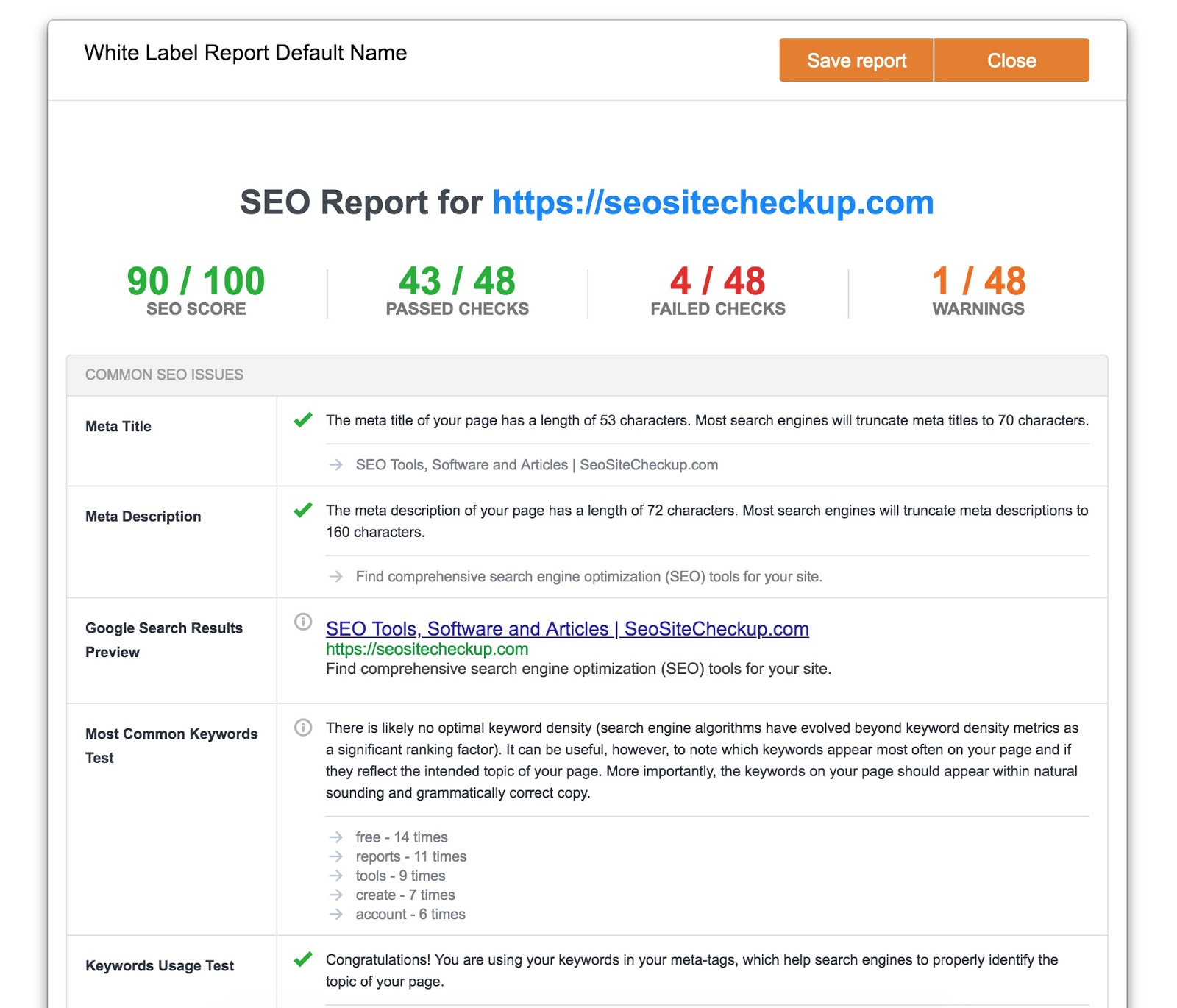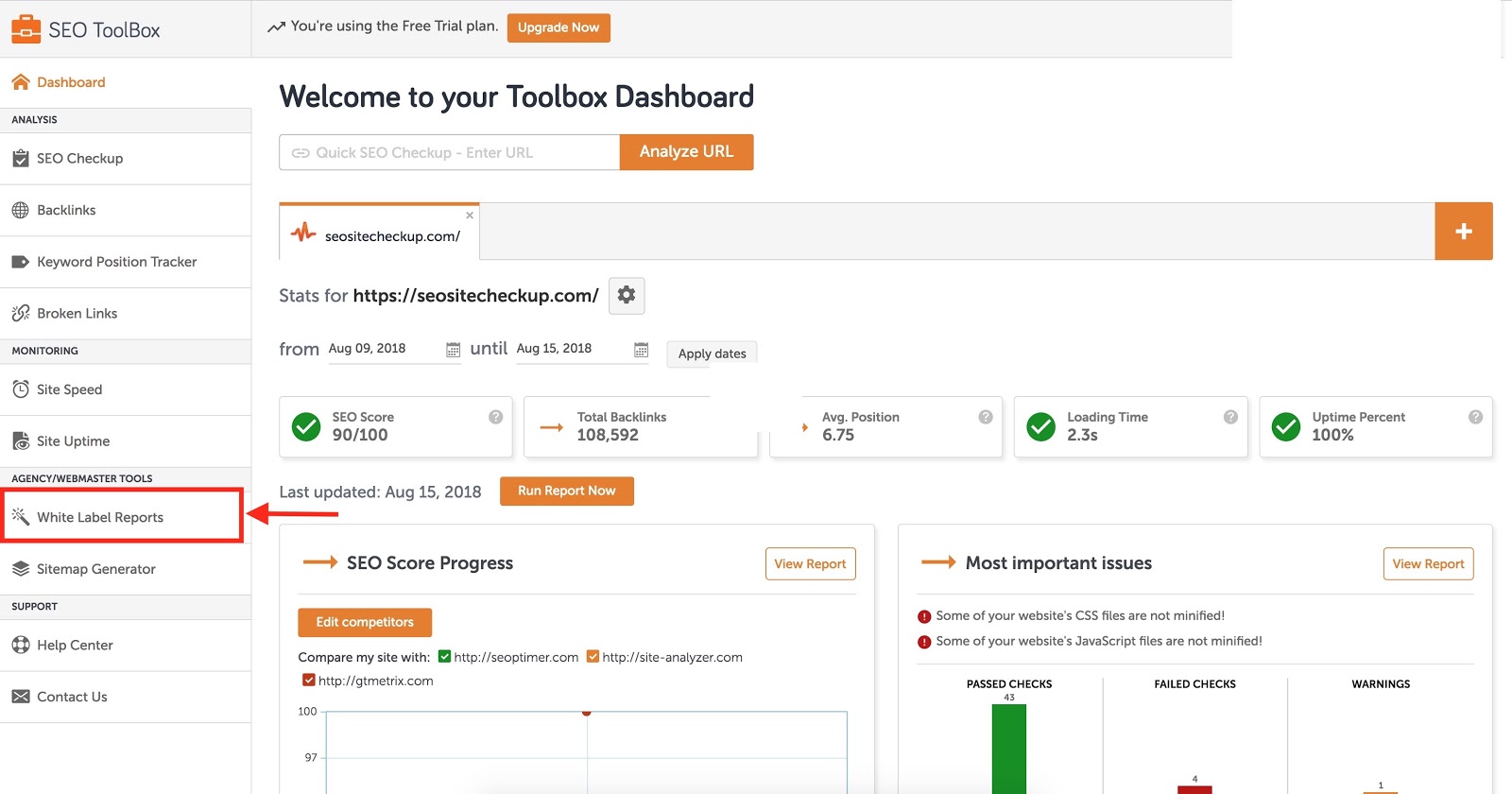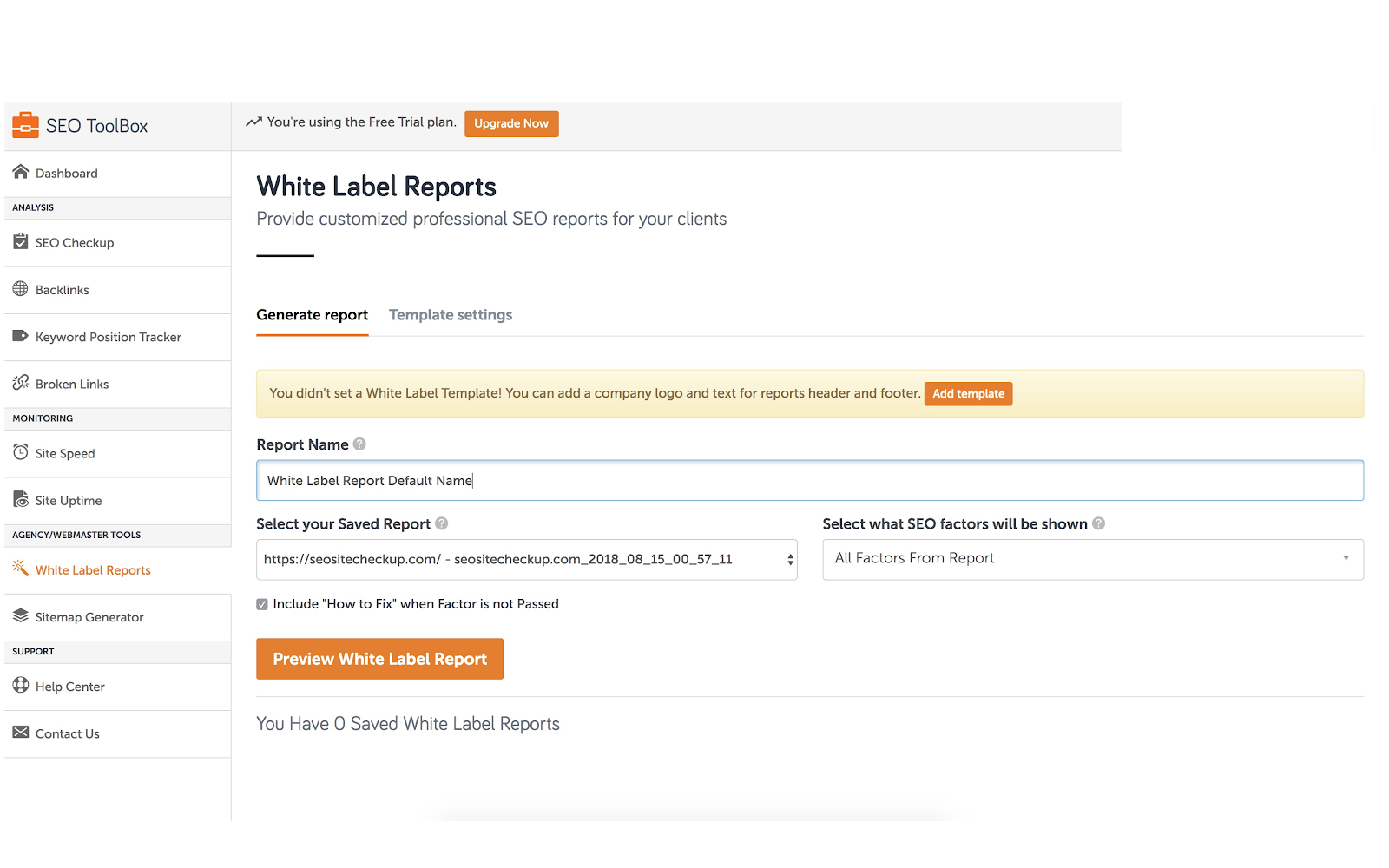Managing multiple SEO clients can easily become overwhelming. You would need to keep them updated with frequent progress reports. Moreover, new clients also need the initial site assessment report, aka SEO audit reports.
Manually creating an SEO report for one or two clients would be possible — although it would still be a time consuming and tedious process. However, if you are dealing with 10, 20, or say, 100 clients, regularly sharing SEO reports with them becomes almost impossible.
No business owner is going to hand over their hard-earned marketing dollars unless you show them metrics and results. And if you plan on securing high paying clients, then you need to come up with an efficient and productive way to come up with detailed SEO reports for each client on a regular basis.
That’s where white label SEO reports come in.
What is a white label SEO report?
A white label report is a professionally detailed SEO report that once completed, can be rebranded and used by other companies.
The SEO Site Checkup Toolbox allows you to create a professionally designed and highly-detailed white label SEO report. Since white-label SEO reports are 100% re-brandable, you can also include your own logo and design in it.
Here is an example of a white label SEO report created by SEO Site Checkup.
The SEO report gives you and your clients a bird’s eye view of your SEO performance. Apart from the overall SEO score, you can also quickly identify how many tests a website passed or failed.
Here are a few key elements that the SEO Site Checkup tool analyze and present in the SEO report:
- Meta title
- Meta description
- Google search results preview
- Keyword usage in meta title and meta description
- Heading tags
- Robots.txt
- Sitemap
- Broken links
- An SEO-friendly URL structure
- Image alt text
- Inline CSS
- Deprecated HTML tags
- The total number of backlinks your domain has
- JavaScript errors
- HTML web page size
- HTML compression/GZIP
- Website loading speed
- Flash
- Image caching
- JavaScript minification
- CSS minification
- Nested tables
- URL redirection
- URL canonicalization
- HTTPS (website security)
- Safe browsing
- Mobile friendliness
- Microdata Schema
And much more ...
You can also learn more about How to Fix Deprecated HTML Tags with our video below:
Benefits of SEO reports
Now that you have seen the various tests you can run and present in an SEO report, let’s briefly discuss the benefits of these white label SEO reports before jumping into how you can create them in the SEO Site Checkup Dashboard:
- Keep your clients updated with regular SEO reports and overall progress.
- Professional-looking reports that are well-designed and easy-to-read for you as well as your client.
- Reports are easy to brand with your own logo and design.
- Quickly and easily identify SEO issues that may have a significant impact on a website’s search engine rankings.
- Excellent for pitching new clients by showing them the SEO issues they are facing and how you can help fix them.
- Very easy to create. These white label SEO reports can be generated in just a few minutes in the SEO Site Checkup Dashboard.
- Allows you to scale your SEO consulting business at a much rapid pace, which wouldn’t be possible if you’re to create all the reports manually for all of your clients.
As we just mentioned with SEO Site Checkup, creating these white-label SEO reports is extremely easy and straightforward. Here is a step-by-step guide on how you can generate this SEO report for your or your client’s website in just four easy steps.
Step #1 — Log in to the SEO Site Checkup Dashboard
Start by logging into the SEO Site Checkup Dashboard. If you are already using the SEO Toolbox from SEO Site Checkup, then log into your account and select the ‘White Label SEO’ link on the left.
If you are not a user, sign up now to get access to the white label SEO reports. You will get a free trial of all the tools (including the white label reports) when you sign up.
Once you click the White Label SEO link, a page will be displayed asking you to name the template. You can name the template, so when you need another report for that same website or client, it is ready to go with a simple click of the mouse. You can also add header and footer text here, which would be available each time you run the white label SEO report.
Step #2 — Settings
The next step is to name your SEO report and customize its settings.
Here are a few settings you should know about:
- If you want to select a previously saved report, you can select it from the first drop-down menu.
- From the second drop-down menu, you can select which SEO factors do you want to analyze in the SEO report. You can either select ‘All Factors From Report,’ or you can manually select and deselect specific SEO factors. This option comes in handy when dealing with different clients with varied requirements. By manually selecting and deselecting particular factors, you can easily customize the SEO report and only highlights the factors that your client is most interested in.
- As you can see, there is also a checkbox that says “Include ‘How to Fix’ when Factor is not Passed.” If you are creating an SEO report for your own website or use, we recommend checking this option is it offers valuable suggestions on how to fix SEO issues. On the other hand, if you are creating a report for your SEO client, we recommend leaving the option unchecked.
The ‘How to Fix’ feature offers valuable suggestions and meaningful insights on how to solve SEO issues and fix tests that your website failed. If a test fails, just follow the steps that are highlighted and fix the problem.
Step #3 — Preview the report
Once you have named the report and selected the settings, it is time to preview the report. To do so, hit the ‘Preview White Label Report’ button, which can be seen in the previous image.
If the report is to your liking, click the ‘Save Report’ button to save the report.
Step #4 — Download the report
Once you click the ‘Save Report’ button, the report will be saved in your dashboard. You can then download it as a PDF.
Conclusion
Keeping your clients updated is essential. Since search engine optimization is a gradual process, it is important that you share easy-to-read reports with your clients on a regular basis. Otherwise, you may lose your clients, or they may not be able to see precisely what you are doing, the SEO issues you’ve fixed, and the progress you have made.
However, since manually designing each report with all the crucial information is time-consuming and inefficient, generating white-label SEO reports is the perfect alternative option.
It is productive, efficient, cost-effective, and allows you to send highly professional and customizable reports to your clients on a weekly, monthly, or quarterly basis.
Give it a try. If you are not a user of the SEO Site Checkup Toolbox, sign up for free and get a 14-day trial.
